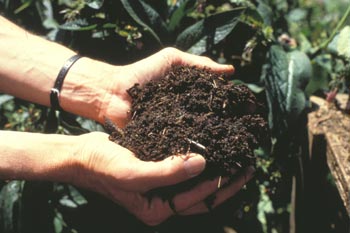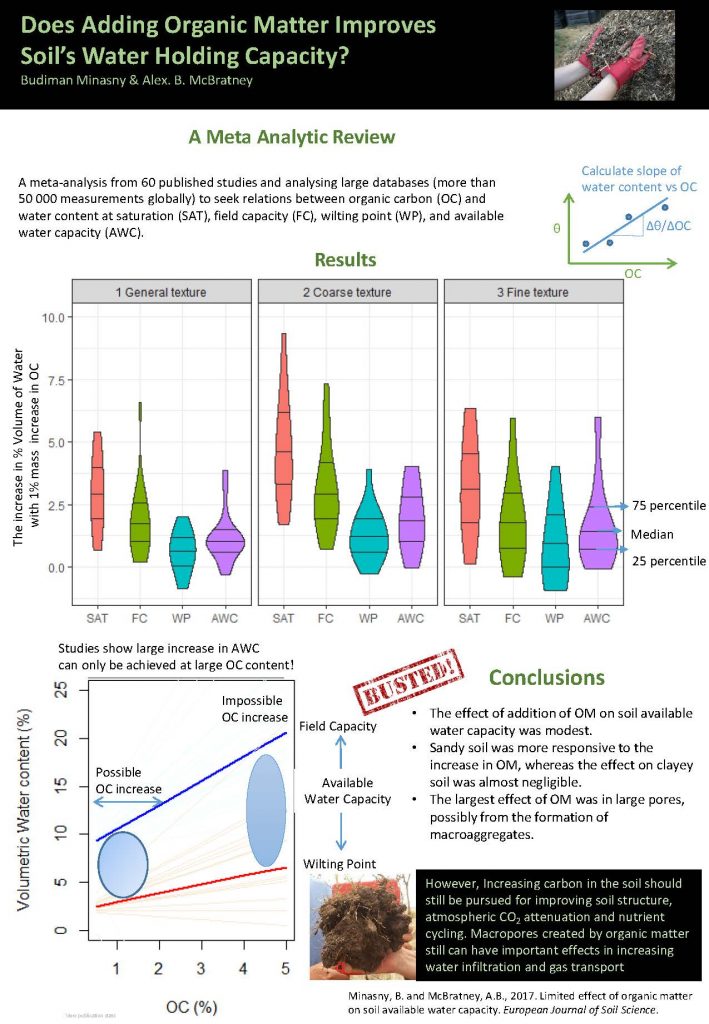Sequestering carbon in the soil via the addition of Organic Matter addition has been widely promoted to contribute to the mitigation of climate change. Enhancing soil organic matter can improve soil quality, i.e., increasing nutrient retention, improvement in soil structure, enhancing soil biotic activity and improvements in soil moisture and temperature regimes. Organic matter addition has been widely promoted for increasing soil’s water holding capacity. It was suggested as a means to buffer yields against future variable weather conditions.
While the positive effect of OM on soil water retention is much-studied and widely promoted, there is still no clear consensus on its quantitative effect. The increase in the amount of water that is available to plants with an increase in organic matter is still uncertain and maybe overestimated. To clarify this issue, researchers from Sydney Institute of Agriculture, at the University of Sydney conducted a critical review and published in European Journal of Soil Science. They evaluated data from 60 published studies and analysed large databases of soil water (more than 50 000 measurements globally) to seek relations between organic carbon (OC) and water content at saturation, field capacity, wilting point and available water capacity.
From this first comprehensive review, the authors found that the effect of addition of OM on soil available water capacity was modest, with average value of between 15 to 20 mm per m with 1% mass increase in organic carbon. Sandy soil was more responsive to the increase in OM, whereas the effect on clayey soil was almost negligible. The largest effect of OC was in large pores, possibly from the formation of large aggregates, and its effect decreases with a decrease in size of pores.
A one percent mass increase in soil organic carbon (or 10 g C per kg soil mineral), on average, increases water content at saturation, field capacity, wilting point and available water capacity by: 30, 16, 2 and 12 mm water per m of soil. Compared with reported annual rates of carbon sequestration after the adoption of conservation agricultural systems, the effect on soil available water is negligible. Thus, arguments for sequestering carbon to increase water storage are questionable.
The results also suggest that the gradual loss of organic matter from soil would have a minimal effect on the hydrological cycle. Global warming might cause a loss in soil carbon, but the effects on soil water availability to plants and its consequent effect on the hydrological cycle might be less than we thought previously.
However the authors noted that this study should not be interpreted as we don’t have to increase soil’s organic matter. When the soil organic carbon content falls below 1%, the soil is in trouble, and the soil aggregates become destabilized and soil nutrient cycling is compromised. Increasing carbon in the soil should still be pursued for improving soil structure, atmospheric CO2 attenuation and nutrient cycling. Macropores created by organic matter still can have important effects in increasing water infiltration and gas transport. In addition, adding OM can create a mulching affect which reduces soil evaporation, and thus increase soil water content.
Reference:
Minasny, B. and Mcbratney, A.B., 2017. Limited effect of organic matter on soil available water capacity. European Journal of Soil Science. DOI: 10.1111/ejss.12475


Leave a Reply